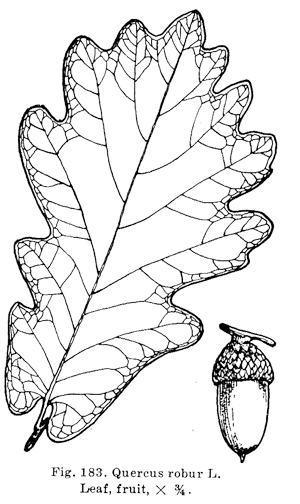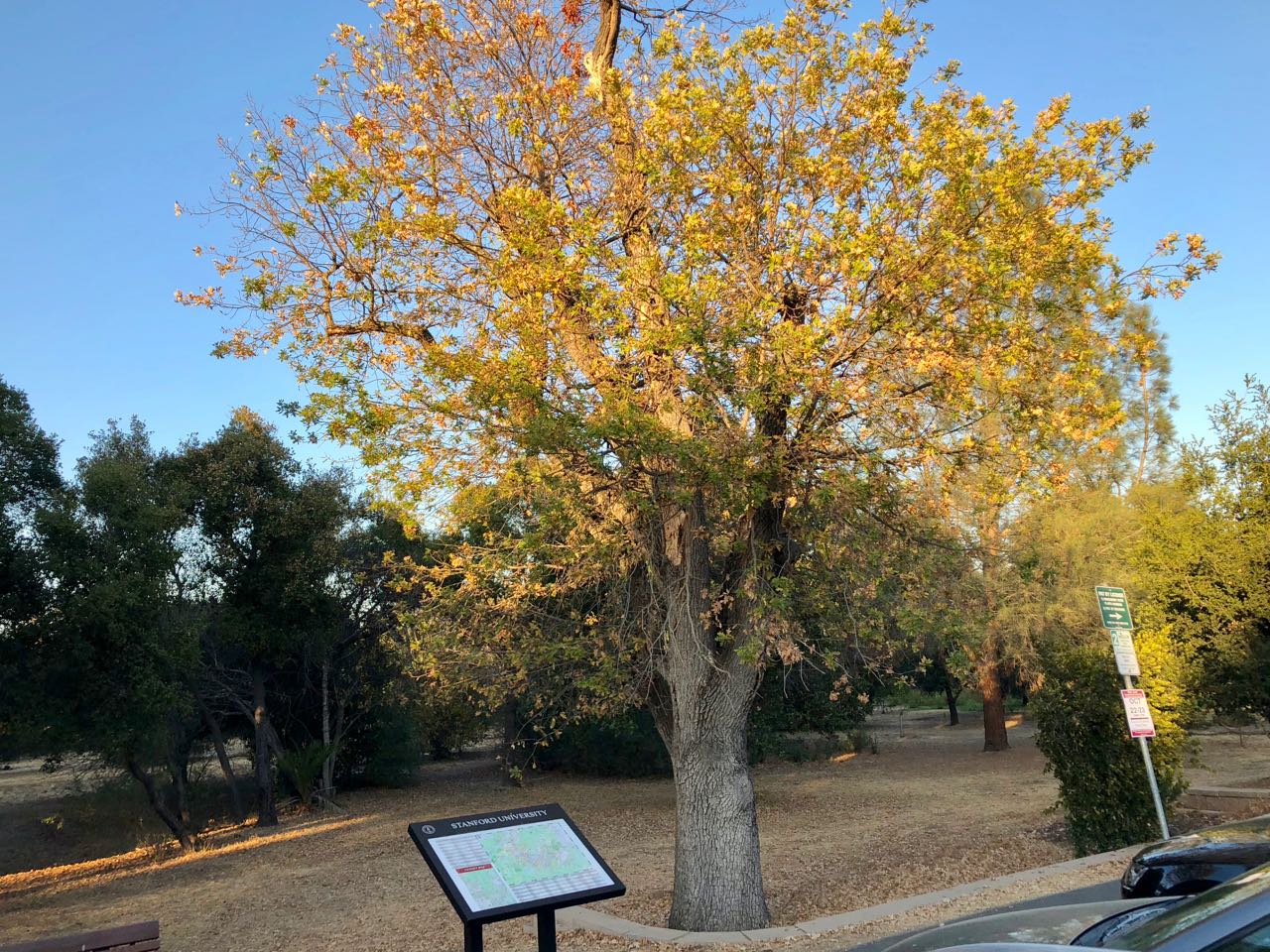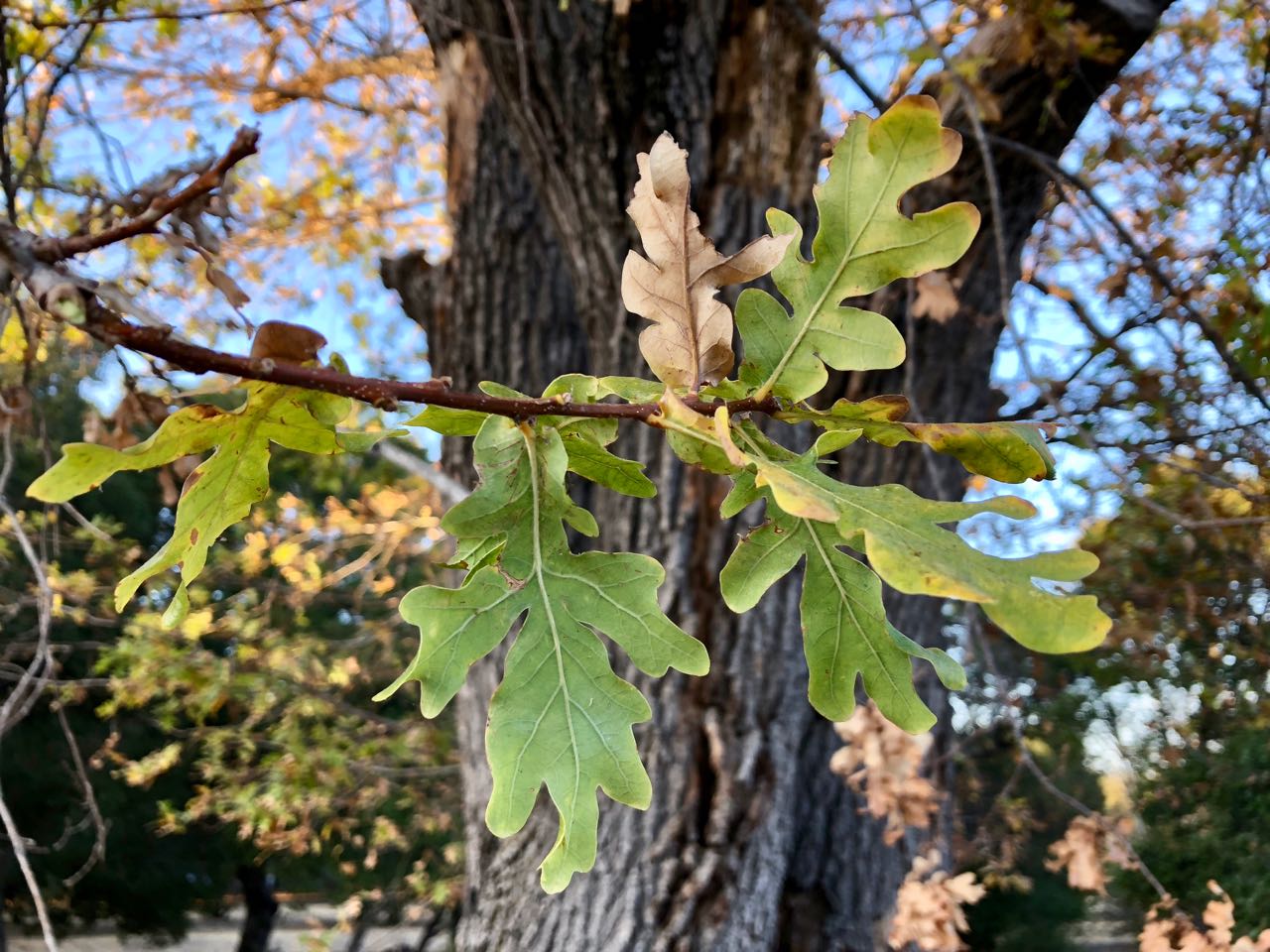Quercus robur
 English oak
English oak
Famous in song and story, English oak grows wild in all countries of Europe and into the Middle East, so the name is a misnomer. But at least it is actually native to England, where it is known as common oak or pedunculate oak, the latter name referring to the peduncles or long stalks on which the clusters of 1-inch acorns hang. It is also known as aik in Scotland, woke or woak in the west of England and yak in the south, róvere in Italy, and roble in Spanish. The word acorn denotes oak-corn. The leaves are 2 to 5 inches long with many rounded lobes, smooth above, paler and bluish below, and without stalks. Two characteristic ear-like lobes are at the base. English oak is known from historical records to live to a great age, probably a thousand years, and to a great size, a height of 128 feet and a girth of 43 feet having been recorded.
Columnar selections have been planted on campus in recent decades. The most prominent are the trees along the bike racks on the west side of Clark Center (2004). A similar row is on the west side of Fairchild Center next door. These were planted in 2010 when the adjacent Alumni Lawn was created. More upright trees line the path in the southwest courtyard of Meier Hall (2017); these may be a hybrid. A venerable 50-foot specimen with a spreading crown, removed in 2022, stood just north of Roth Way, midway between Palm and Lomita drives. Its retaining wall had also protected a coast redwood. A row of 16 ‘Fastigiata’ lined Buckeye Lane at Schwab Residential Center before redevelopment of the area. In Palo Alto, the columnar English oaks in front of 2650 Birch Street retain their dead leaves in winter.

Name derivation: Quercus – Latin for oak; robur – Latin for oak-wood, also strength.
About this Entry: The main text of this entry is from the book Trees of Stanford and Environs, by Ronald Bracewell, published 2005. Redwood on Roth Way noted as removed (Oct 2018, SP). Edits, new locations (Dec 2024, SP).






